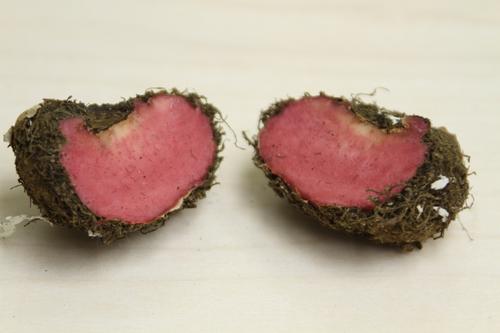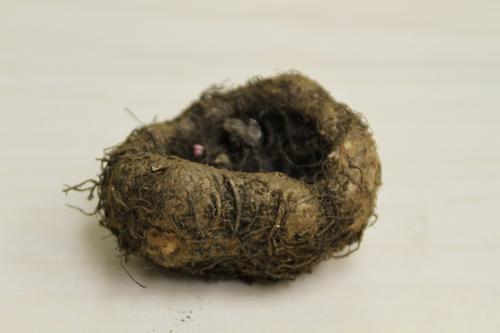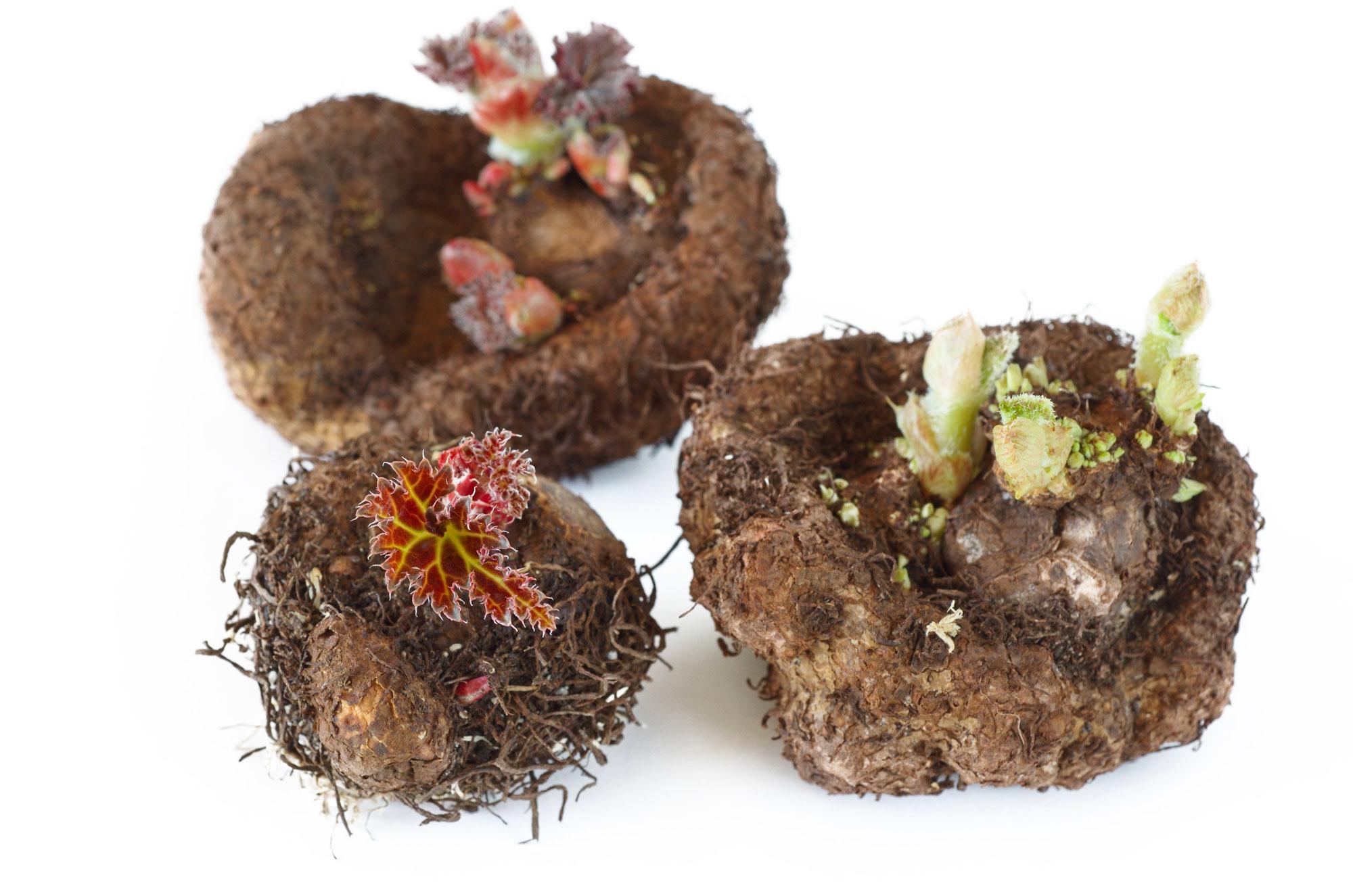
As with other types of bulbs, a begonia tuber is filled with stored food energy that the young plant will use to fuel its growth.
If you cut a begonia tuber bulb in half, you’ll see it resembles another, more familiar type of tuber -- a potato (but begonia tubers are not edible!). Like a potato, the outer surface of a begonia tuber is covered with growth points or “eyes”.

Begonia tubers have two sides: one is dished (concave) and the other is domed (convex). The domed side of the tuber should rest on the soil surface, so it sits like a bowl. As the tuber begins to grow, fine root hairs will form on both the outside and inside of the bowl.

Most of the tuber's eyes are located inside the cupped area where they’re safe from harm. When these eyes sprout, they will grow up toward the light and develop into the plant’s stems, leaves and flowers.
To learn more about growing tuberous begonias, we recommend: All About Begonias, How to Start Tuberous Begonias Indoors or Types of Begonias.


